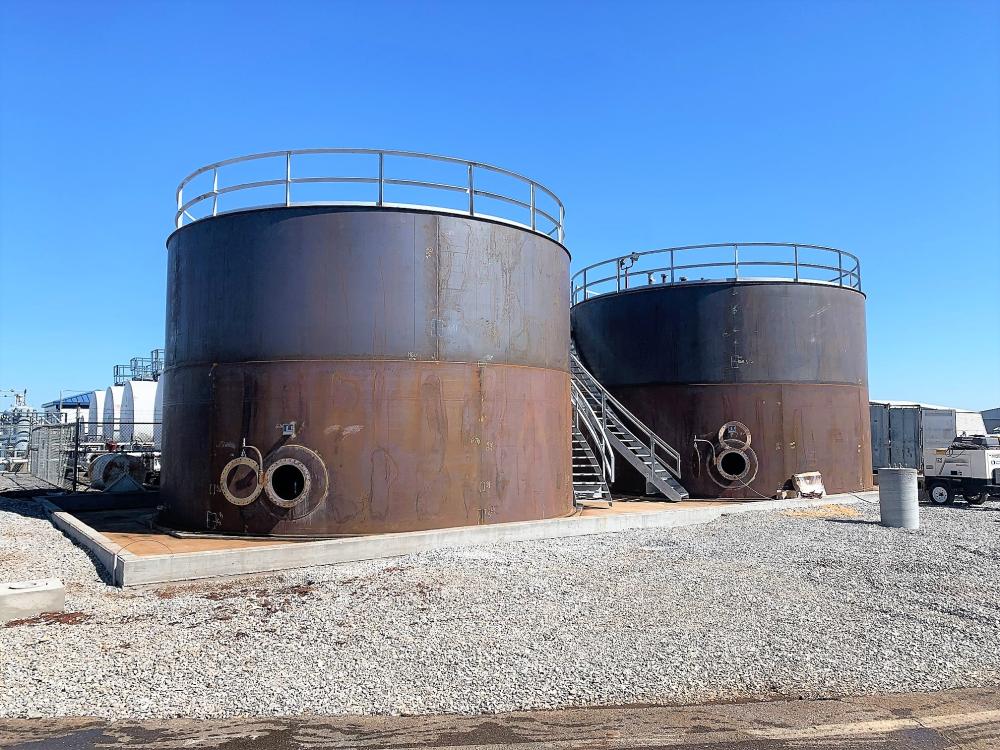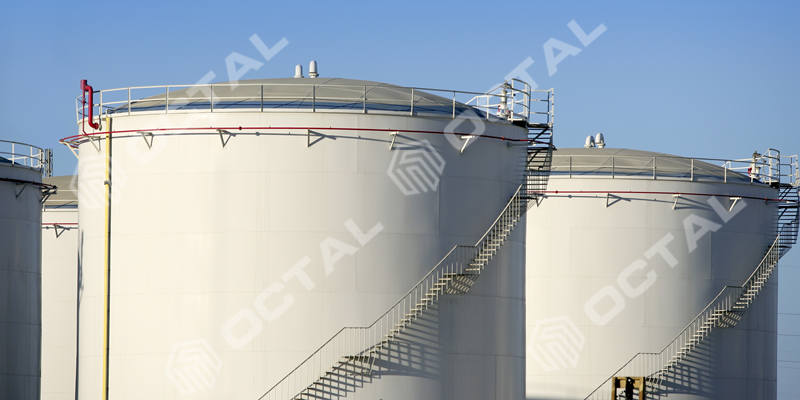The Complete Breakdown About API 650 Welding Inspection Standards
Just How Welding Inspection Works: A Comprehensive Guide for Professionals
Welding evaluation plays a vital duty in ensuring the safety and reliability of bonded structures. It entails a methodical method that includes both aesthetic assessment and progressed testing approaches. Professionals should familiarize themselves with crucial criteria and laws regulating the sector. Comprehending the typical defects that can emerge during welding is necessary. This guide will certainly discover these aspects in information, providing understandings into the processes that copyright top quality and integrity in welding.
Recognizing the Importance of Welding Assessment
While many may underestimate the value of welding examination, it plays a vital role in guaranteeing the honesty and safety and security of welded frameworks. Effective welding evaluation recognizes possible problems and problems that can jeopardize structural strength and bring about tragic failings. The evaluation process includes different techniques, such as aesthetic evaluations, ultrasonic testing, and radiographic analyses, each adding to the general examination of weld high quality.
Along with safeguarding the structural stability, welding inspection ensures conformity with market standards and client specs. By making certain that welds meet called for attributes and tolerances, inspections help preserve the reliability and long life of parts in various applications, from building and construction to aerospace. A strenuous evaluation procedure fosters a society of high quality and liability among makers and welders. Ultimately, welding inspection is not simply a procedural step; it is a critical method that underpins the safety and efficiency of crafted systems across diverse markets.
Key Specifications and Regulations in Welding Inspection
The structure of effective welding examination hinges on adherence to developed laws and requirements. Numerous organizations, such as the American Welding Society (AWS) and the American National Criteria Institute (ANSI), stated guidelines that guarantee quality and security in welding techniques. Secret standards, such as AWS D1.1 for structural welding and ASME Area IX for pressure vessels, give comprehensive requirements for welding certifications, examinations, and treatments. Regulatory frameworks, including those from the Occupational Security and Wellness Administration (OSHA), mandate security practices and worker defenses in welding settings. Compliance with these criteria is essential for accomplishing constant weld high quality and decreasing the danger of failures. Furthermore, global requirements like ISO 3834 further improve worldwide consistency in welding evaluation methods. Experts need to remain informed concerning these guidelines to guarantee that their inspection approaches line up with industry expectations and legal needs, therefore protecting both personnel and structural integrity.
Initial Prep Work and Aesthetic Inspection Techniques

Efficient welding examination starts with a complete pre-inspection list that guarantees all needed conditions are met before the actual evaluation happens. Following this prep work, aesthetic defect recognition plays an essential duty in evaluating weld quality, enabling examiners to detect issues such as splits or incorrect fusion. With each other, these strategies create the foundation for an effective welding assessment procedure.
Pre-Inspection Checklist
Prior to commencing any kind of welding evaluation, an extensive pre-inspection list is important to ensure that all required prep work are completed and that aesthetic examination methods are effectively employed. Trick aspects of this checklist consist of validating the welding treatment requirements (WPS), ensuring all tools is calibrated and in great functioning problem, and confirming that the inspector possesses the called for qualifications. In addition, it is crucial to examine any previous inspection records and to evaluate the work environment for safety risks. The assessor ought to also validate that all appropriate paperwork, such as product certificates and inspection records, is conveniently offered. Finishing this list aids to develop a solid structure for a successful assessment procedure, boosting the dependability of the results acquired.
Aesthetic Flaw Recognition
An effective visual flaw recognition process starts with cautious initial preparation and the application of well established aesthetic inspection techniques. Inspectors need to guarantee that the welding location is clean and well-lit, as ample presence is essential for discovering defects. A thorough exam of the weld joint's surface permits the recognition of gaps, such as redirected here fractures, undercuts, or porosity. Examiners commonly utilize devices like multiplying glasses or mirrors to enhance their view of hard-to-reach areas. In addition, they ought to recognize with the particular welding standards and standards appropriate to the task. By adhering to these approaches, inspectors can successfully identify possible problems, protecting the integrity of the weld and conformity with industry requirements.
Non-Destructive Screening Approaches: An Overview
Non-destructive testing (NDT) techniques play a vital duty in the welding assessment procedure by guaranteeing the stability and reliability of bonded structures without creating any kind of damages (API 650 Welding Inspection). These techniques allow inspectors to assess the high quality of welds while preserving the components being checked out. Common NDT techniques consist of ultrasonic screening, radiographic testing, magnetic particle testing, and color penetrant testing, each offering special more helpful hints benefits
Ultrasonic screening employs high-frequency sound waves to spot inner flaws, while radiographic screening uses X-rays or gamma rays to imagine the interior framework of welds. Magnetic fragment screening reveals surface and near-surface flaws by using an electromagnetic field and iron particles to the weld area. Dye penetrant screening highlights surface-breaking imperfections with the application of a tinted dye. With each other, these NDT approaches give vital understandings into weld quality, making it possible for specialists to make informed decisions regarding safety and conformity in welding applications.
Common Problems and Their Ramifications
Recognizing common problems in welded joints is important for maintaining architectural integrity and safety. Different flaws can arise throughout the welding procedure, each lugging prospective implications for the overall efficiency of the structure. Porosity, defined by little gas pockets within the weld, can weaken the joint and endanger its load-bearing capability. Fractures may develop due to thermal stress or inappropriate cooling, leading to prospective failing under stress and anxiety. Incomplete blend occurs when the weld metal does not fully bond with the base product, resulting in weak joints that may not hold up against designated tons. Damaging, where the base steel is deteriorated, can also lower the effective cross-section of the weld. Additionally, extreme reinforcement can produce anxiety focus that might cause failure. Acknowledging these flaws immediately enables restorative procedures, making certain the long life and reliability of welded frameworks in crucial applications.
Tools and Devices Used in Welding Inspection
Effective welding evaluation depends on a range of specialized devices and devices to guarantee the top quality and honesty of welded joints. Essential tools consist of aesthetic inspection tools, such as multiplying borescopes and glasses, which allow examiners to very closely take a look at welds webpage for surface area problems. Non-destructive testing (NDT) methods, such as ultrasonic screening, radiographic screening, and magnetic fragment testing, are fundamental for determining internal defects without harming the material.
Measurement tools, consisting of calipers and weld evaluates, help ascertain and assess measurements conformity with specs. Furthermore, firmness testers evaluate the mechanical buildings of welded joints. Individual protective equipment (PPE) is also crucial, securing the safety and security of inspectors while functioning in possibly dangerous atmospheres (API 650 Welding Inspection). Each device serves a specific function, jointly enhancing the performance of welding evaluation and adding to the reliability of finished projects
Often Asked Questions
What Qualifications Are Needed to Come To Be a Welding Examiner?
To become a welding examiner, individuals generally need appropriate qualifications, such as AWS CWI or CSWIP, in addition to experience in welding processes, design principles, and understanding of assessment methods, safety requirements, and applicable codes.
Just How Frequently Should Welding Inspections Be Conducted?
Welding evaluations need to be conducted on a regular basis, ideally at numerous job stages, including pre-weld, during-weld, and post-weld. Frequency might also depend on industry criteria, task requirements, and the intricacy of the welds entailed.
Can Welding Defects Be Fixed After Examination?

Yes, welding defects can typically be repaired after assessment. Depending on the extent and kind of issue, suitable techniques such as revamping or added welding may be used to bring back structural stability and security conformity.
What Industries Require Normal Welding Evaluations?

Various industries, including building and construction, production, aerospace, and automotive, require regular welding examinations - API 650 Welding Inspection. These assessments guarantee adherence to safety criteria and quality assurance, decreasing risks linked with structural stability and functional performance in welded components
How Do I Select a Welding Inspection Solution?
To select a welding examination solution, one need to take into consideration certifications, experience, qualifications, and market track record. Furthermore, examining consumer reviews and guaranteeing the solution meets relevant criteria can assist ensure quality examinations and trustworthy outcomes.

While lots of may take too lightly the value of welding inspection, it plays an essential function in making certain the stability and safety of bonded structures. Key standards, such as AWS D1.1 for architectural welding and ASME Section IX for pressure vessels, give complete requirements for welding treatments, evaluations, and qualifications. Reliable welding evaluation starts with a thorough pre-inspection list that assures all required problems are satisfied before the real examination takes location. Prior to commencing any welding evaluation, a thorough pre-inspection checklist is vital to guarantee that all essential preparations are completed and that aesthetic evaluation techniques are successfully used. Non-destructive testing (NDT) techniques play a vital role in the welding evaluation process by making sure the integrity and integrity of bonded structures without causing any kind of damage.